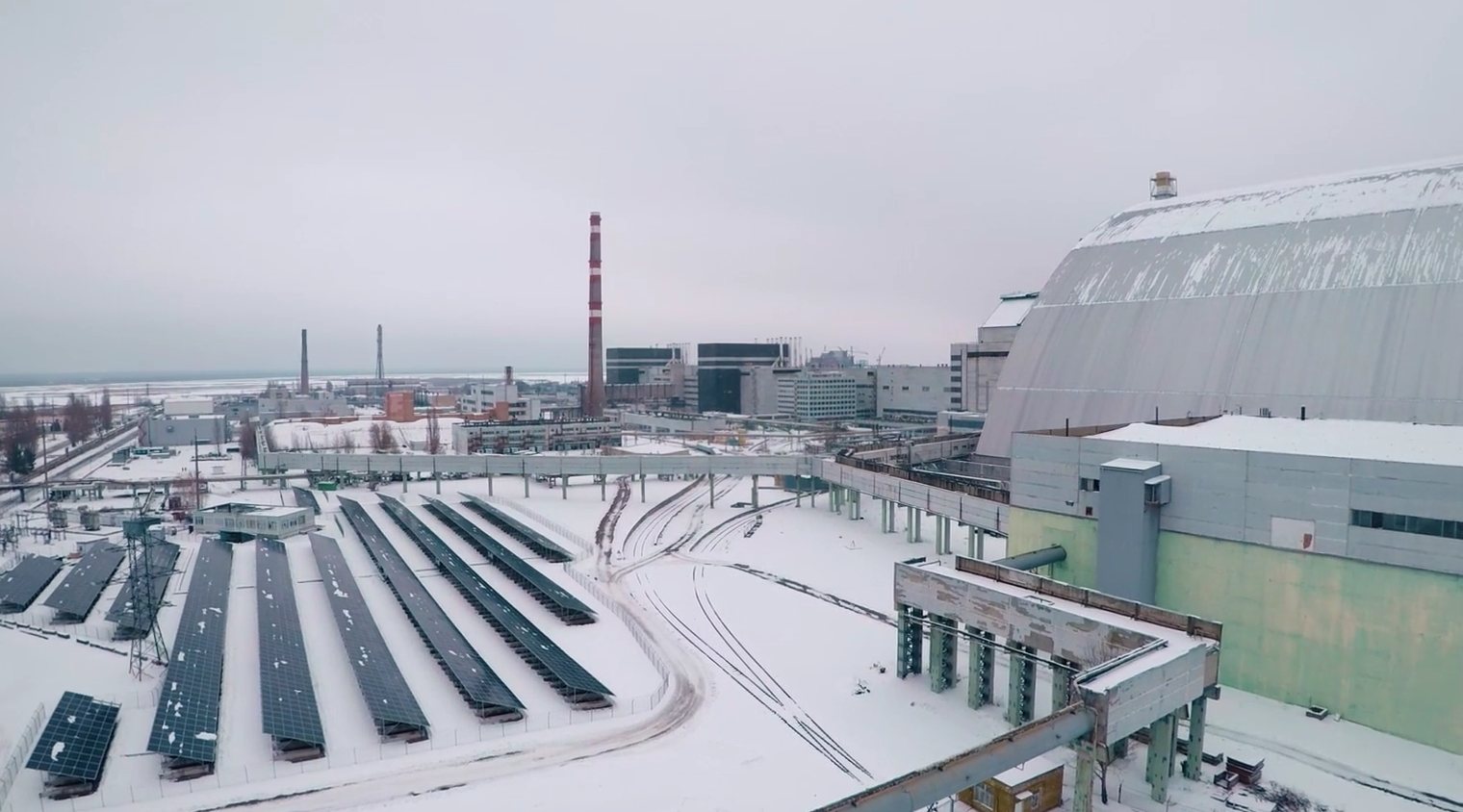
Not the best of days to take a solar power pic | Image: Rodina-Enerparc
Late last week, a solar panel installation at the site of the infamous Chernobyl Nuclear Power Plant in Ukraine was officially unveiled.
In April 1986 an incident involving the No. 4 light water graphite moderated reactor at the facility resulted in the world’s worst nuclear accident to date. An exclusion zone of 30 kilometres radius put in place around the plant remained uninhabited for quite a while, but apparently a couple of hundred people have returned and are now living within the zone.
The area has remained largely unusable and it has been said that parts will remain uninhabitable for 20,000 years.
In 2013, a consortium called Rodina-Enerparc was formed with the goal of seeing a solar project established at the site just 100 metres from reactor #4, which is shielded by a giant sarcophagus. It wasn’t until 2017 that a lease agreement for the location of an initial 1MW facility was finalised and construction commenced.
The solar farm started operations in the first quarter of this year and in July the first electricity was exported into the United Energy System of Ukraine.
The Solar Chernobyl project consists of 3,762 solar panels spread over 1.6 hectares and is expected to generate 1,024 megawatt hours of electricity a year.
This isn’t the first project the consortium has carried out in a radioactive area. It constructed a 4.2MW facility in Bragin (Belarus) at a site where equipment used in the Chernobyl disaster response was decontaminated.
Bigger Solar Plans For Chernobyl Exclusion Zone
Solar Chernobyl is the first project in the zone and may not be the last. The Ukrainian Government has previously stated a goal of seeing around 1GW of solar power installed in the exclusion zone, which has 4 gigawatts of transmission capacity already in place associated with the Chernobyl Nuclear Power Plant.
Solar power can make good use of areas that we’ve really messed up – and there’s certainly plenty of those. PV plants have been popping up all over the world at contaminated sites including abandoned coal mines and landfills, where other forms of development won’t be possible for a long time.
An example of a proposed project here in Australia is a 4.9MW solar facility at the former South Fremantle landfill, approximately 25 kilometres from Perth. If that goes ahead, it will also be Australia’s largest urban solar farm.

 RSS - Posts
RSS - Posts



Three thumbs up!
Q. Why shouldn’t you wear Russian underpants?
A. Chernobyl Fallout